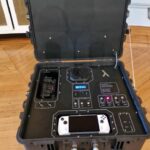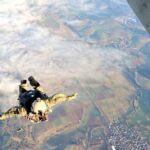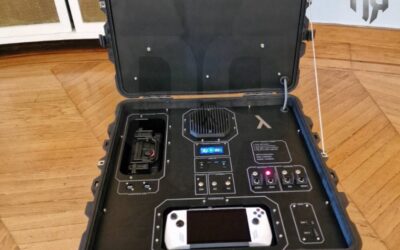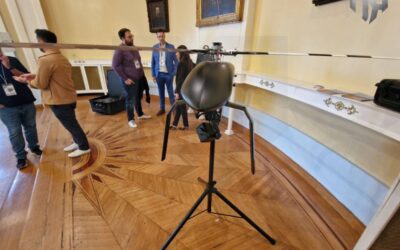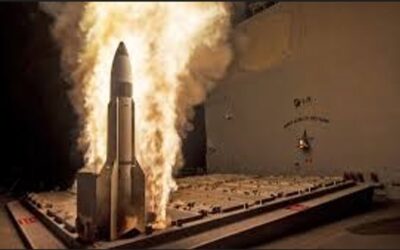The recent presentation of the start-up company Lambda Automata at the “Investing in Deep Tech: Dual-Use Technologies” conference…
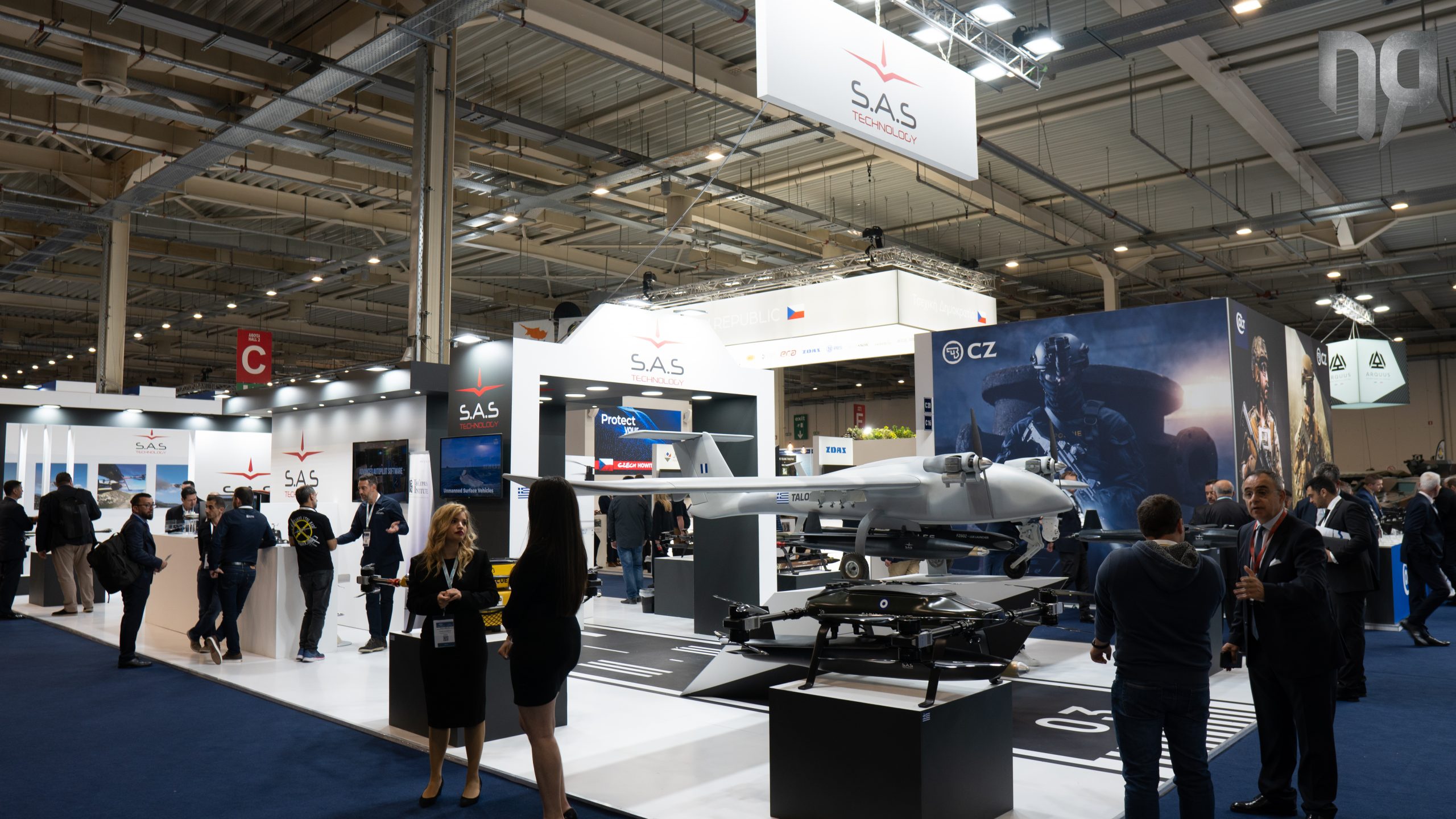
At the booth of the Greek SAS Technology, a company of the SPIRIT WORLD GROUP group, at the International Defence and Security Exhibition DEFEA 2023, the public had the opportunity to learn about the company’s proposals regarding Unmanned Systems.
The Ukrainian front and the leapfrog development of capabilities in this area by our revisionist neighbor has made the need for domestic innovative solutions, which could be added to the unmanned arsenal of the Armed Forces of Greece and Cyprus, imperative.
Seeking to meet these demanding operational needs, SAS Technology presented, among others, the ARES, AIHMI, and TALOS II Unmanned Systems in the aftermath of the successful aerial launch of a rocket by the SARISA-type Unmanned System, which was described as the first domestically manufactured Unmanned Combat Aerial Vehicle (UCAV).
Also read: SAS Technology | Firing of UAS SARISA with FZ-90 rocket (Hydra 70)
“SARISA”
At this year’s DEFEA, the company’s most advanced concept, the SARISA, was presented in a variety of configurations.
Being a heavy-weight, multi-purpose multirotor with a maximum take-off weight of more than 60 kg and a payload of at least 25 kg, the system can be equipped with interchangeable payload carriers, allowing rapid reconfiguration to conduct different types of missions such as close air support, search and rescue, and tactical cargo transportation.
Regarding the armed version, the basic configuration is the SRS-1A type, which carries a single or dual HYDRA 70 rocket launcher rack. Also, the SRS-1R18 and SRS-1R28 versions are available, both of which carry a rocket launcher rack with a configuration of 4 x RPG-18 and 4 x RPG-26 respectively, while the corresponding fire control mechanisms (Servo Firing Mechanism), SFM-18A and SFM-26A are integrated as well.
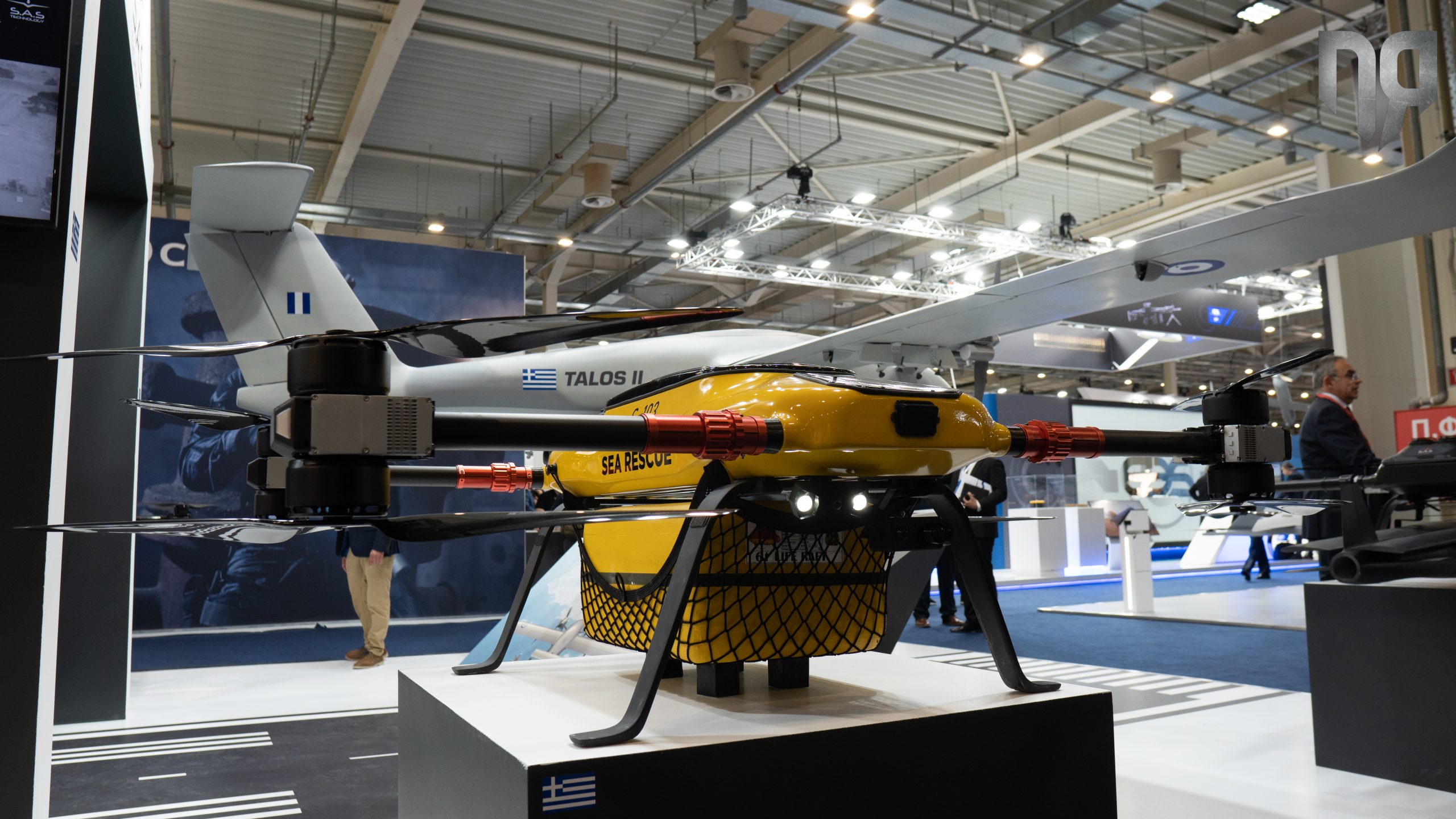
Finally, there are the SRS-1SAR and SRS-1C configurations for search and rescue (SAR) and tactical cargo transportation missions respectively, while the fire-extinguishing configuration in collaboration with the Fire Service should not be overlooked.
Also read: Latsco S.L. | Cooperation with S.A.S and donation of SARISA drones to Fire Service
“AIHMI”
According to company officials, the company’s program for armed UAVs began with the SARISA Unmanned Aerial System two years ago. “Aihmi” is the continuation of this program.
Specifically, it is a new 1.82m long AHX-1X rocket carrier/kit with folding wings (1.98m) and a small electric propeller motor, within which and along the fuselage the laser-guided rocket 70 mm FZ 90-type or FZ275LGR-type from THALES Belgium is fitted.

Also read: Tamnava MLRS | High firepower with the ability to launch 122 and 262 mm rockets
The weapon system in question is characterized as a Stand Off Loitering Munition (SOLM), as, in contrast to conventional loitering munitions, the operational function of the weapon differs as follows: initially carried by an unmanned aerial vehicle, then launched either as a glide weapon, achieving a range of 13-15 km from a release height of 1,000 meters, or as an electrically powered self-propelled system, reaching 60 km, and after approaching the operational range of the rocket (4-7 km), the rocket is released and hits the target.
In this way, during the initial guidance phase the carrier does not approach the target exposing itself to protection systems (hard kill and/or soft kill), and then in the terminal guidance phase taking full advantage of the rocket’s low observability characteristics – due low optical, thermal, acoustic footprint and low radar signature – enters firing parameters and engages, while simultaneously ejecting the AHX-1X expendable carrier.
Indicatively, at the SAS Technology booth, AIHMI was showcased as a payload on the SARISA SRS-1A, but also on the UAV TALOS II, thus maximizing the operational range by exceeding the aforementioned typical range of the rocket, an element that dramatically increases the survivability of the system as well as the chances of a successful shot.
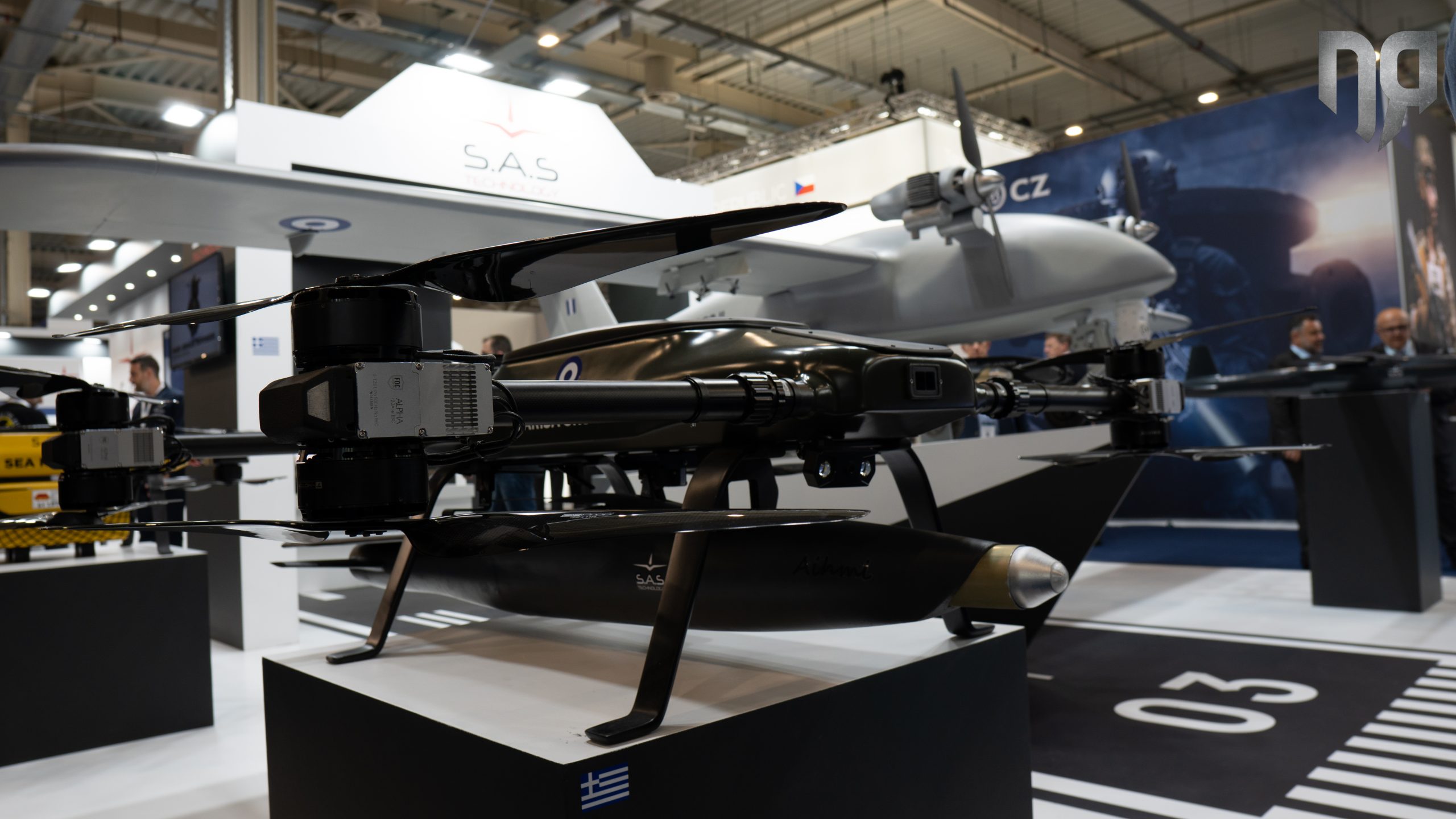
At this point, it should be noted that SAS Technology is developing a modified version of the system so that it can also be mounted as a payload on helicopters from 14″ NATO racks.
Also read: LAWS systems | The Mini-Harpy loitering munition
“TALOS II”
Regarding “TALOS II”, it is probably the most ambitious program of SAS Technology, and it is in the development phase, with the aim of making the first flight test in the medium term. Its initial version, TALOS I carried out flight tests last year.
Now, the upgraded version is configured as a two-engine, MALE (Medium Altitude Long Endurance / Medium Altitude Long Endurance) Unmanned Combat Aerial Vehicle (UCAV) capable of carrying a payload of 60 kg and having a flight range of more than 20 hours.

In detail, according to the company’s specifications, the UAV in question can be equipped with four rockets, guided or not, in a double FZ602 launcher from Thales Belgium, or four “AIHMIs”, or impact fuze mortars in combination with electro-optical equipment (camera), while it can be transferred to the specially configured ground control and storage system CCB-1X so as to be assembled within 10 minutes, in order to take off even outside the airstrips.
“ARES ARS -X1”
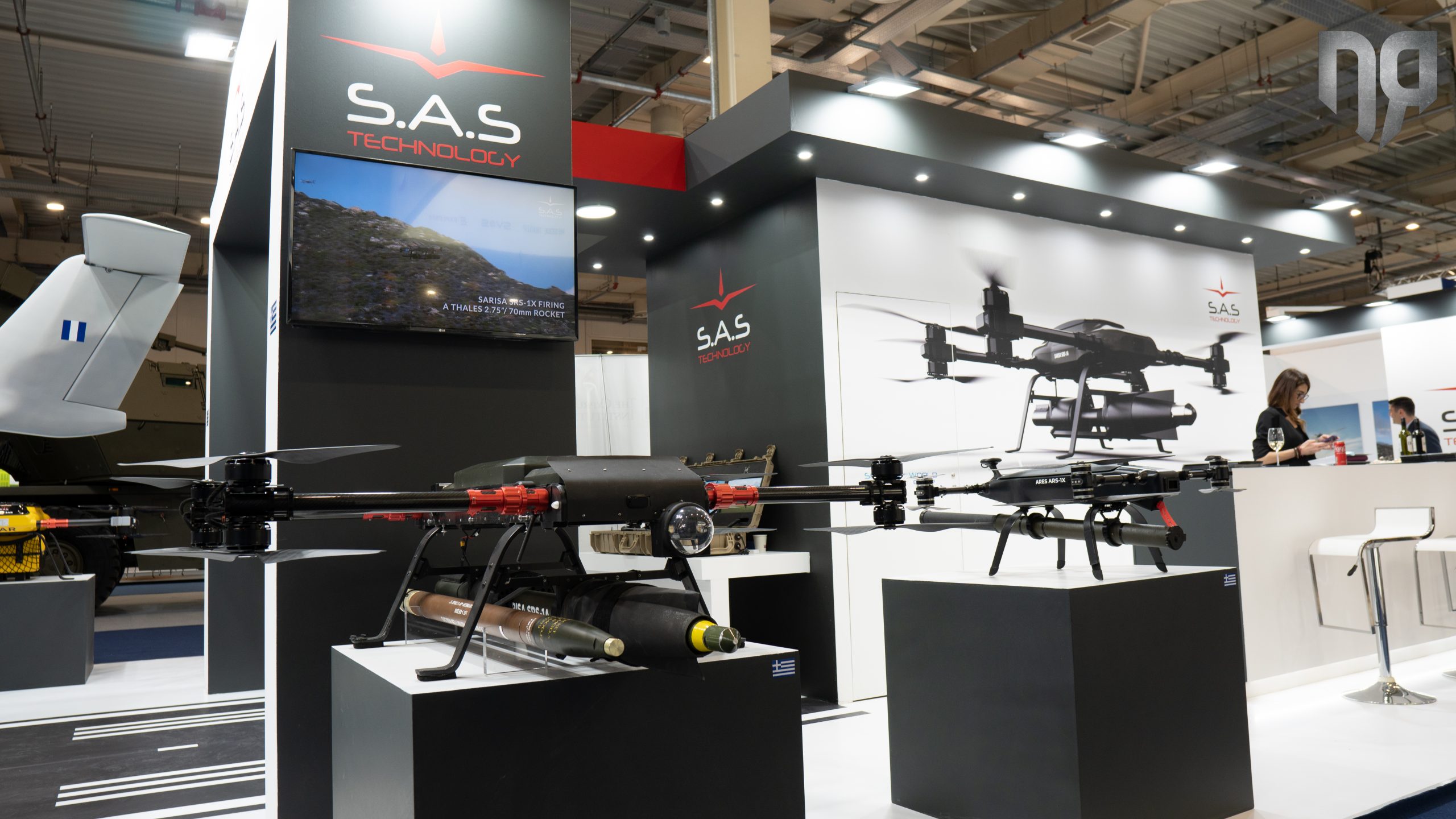
The ARES medium-weight octocopter also attracted attention. A multipurpose dual-use UAS (civil or military) capable of carrying up to 18 kg of payload.

ARES can take a Quad or Octo-Quad configuration using various types of engines performing surveillance, cargo transport, and delivery missions, even carrying a single-use weapon tube for firing RPGs or grenade dispensers and mortar cells.
Also read: UAV Hera | The multi-purpose quadcopter UAV
MPGS-S3 HOTAS, TRF-1TR and HGD-AR73
Another interesting exhibit was the MPGS-S3 HOTAS mobile ground control station for the entire fleet of Unmanned Aerial Vehicles. It is a MIL Grade HOTAS (Hands-on Throttle & Stick) type station with three 15.6 inch screens, with each one separately transmitting telemetry information, a satellite map, and live video feed from the existing electro-optical equipment.
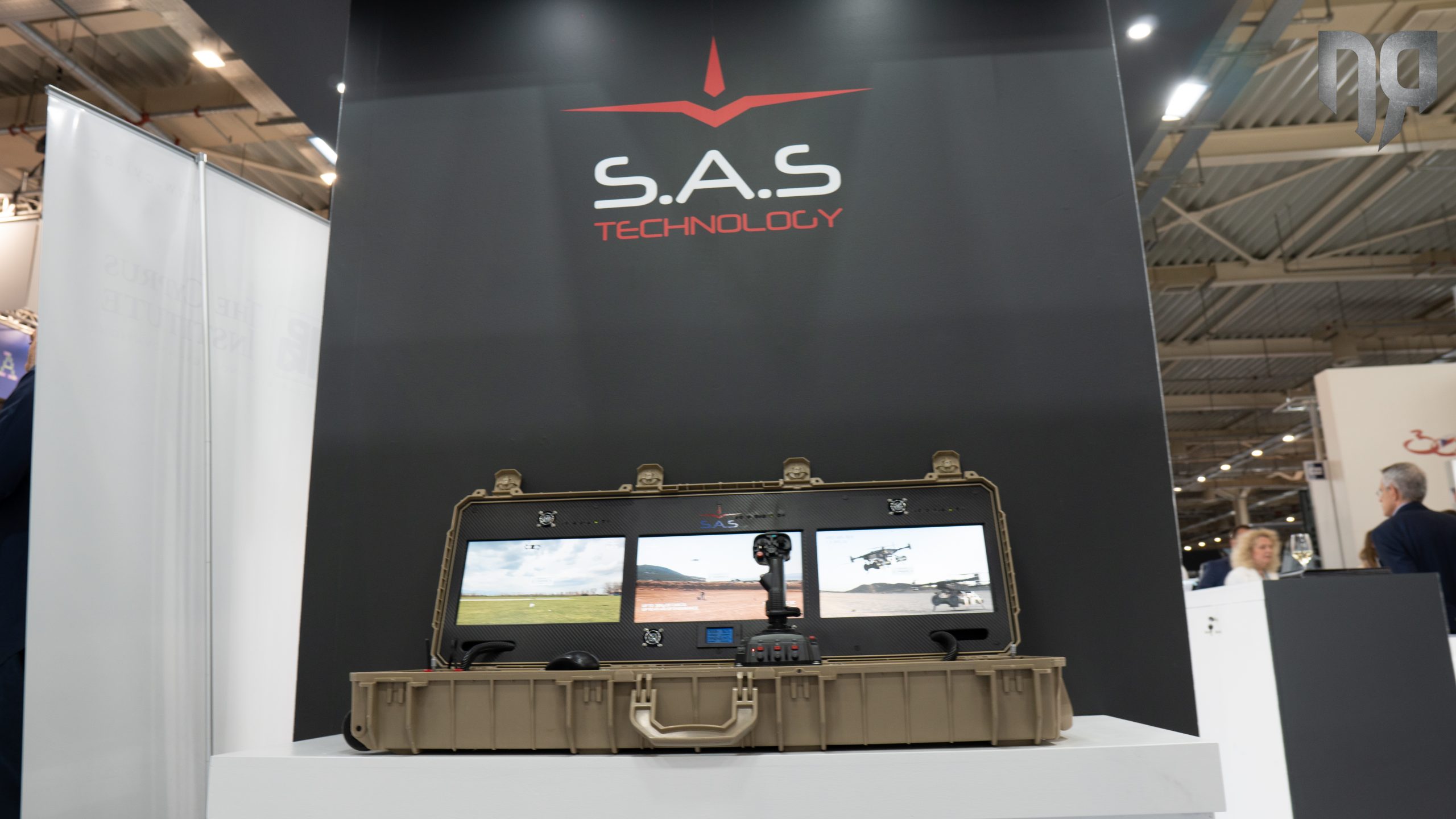
Furthermore, the system incorporates Wi-Fi and Bluetooth connectivity, and 3 folding Joystick axes for HOTAS operation, while being transported in a military-spec case with two wheels. Also, it can work with customized software solutions from 1 to 2 users and 2-hour endurance.
SAS’s TRF-1TR telematics system for remote control of objects also made an impression. The said system includes two modules: the TRF-1TR as a radio-transmitter, which is installed on the UAV, and the TRF-1R as a receiver integrated into the fire control mechanism (Servo Firing Mechanism).
Similarly, the HGD-AR73 (Hand Grenade Dispenser) system for dropping Arges-73 type grenades from UAVs attracted interest. According to the company, the UCAV ARES and UCAV SARISA can carry 8 and 15 single grenade launchers respectively.
The Cyprus Institute at the SAS booth
It is worth mentioning that next to the SAS booth was the stand of the Cyprus Institute, whose Unmanned Systems Research Laboratory has demonstrated commendable work in the development of UAVs and collaborates with the company offering solutions in autopilot systems.
Also read: Argentina | Acquisition of HERO loitering munitions from Israel
READ MORE
VELOS ROTORS | Velos V3 UAS introduced as ideal example of dual-use systems
The “Investing in Deep Tech: Dual-Use Technologies” conference held at the Hellenic Armed Forces Officers’ Club in…
US Navy | First combat use of SM-3 Missiles
In a historic first, US Navy Arleigh Burke-class destroyers deployed Standard Missile-3 (SM-3) anti-missile interceptors in combat…
SIPRI | New record in global military spending
In 2023, global military spending set a new record for the ninth consecutive year, according to research by SIPRI, the Stockholm-based…
Iraq – Turkey | Sign more than 20 agreements
Turkish President, Recep Tayyip Erdogan, met with his Iraqi counterpart, Abdul Latif Rashid, in Baghdad on the occasion of his official…
Lambda (λ) Automata | Autonomous surveillance solutions at “Investing in Deep Tech: Dual-Use Technologies” conference
The recent presentation of the start-up company Lambda Automata at the “Investing in Deep Tech: Dual-Use Technologies” conference…
VELOS ROTORS | Velos V3 UAS introduced as ideal example of dual-use systems
The “Investing in Deep Tech: Dual-Use Technologies” conference held at the Hellenic Armed Forces Officers’ Club in…
OCCAR | Additional Night Vision Goggles
The Director of the Organisation for Joint Armament Cooperation (OCCAR), Mr. Joachim Sucker, has signed a third amendment to…
Iraq | Εxplosion at military base south of Baghdad
A major explosion at a command post of the Iraqi Army took place today Saturday about 50 kilometers south of Baghdad…










